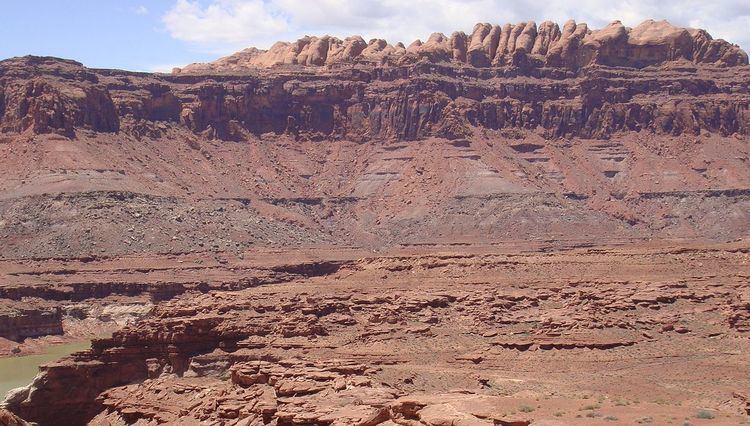 | ||
Lithostratigraphy is a sub-discipline of stratigraphy, the geological science associated with the study of strata or rock layers. Major focuses include geochronology, comparative geology, and petrology. In general a stratum will be primarily igneous or sedimentary relating to how the rock was formed.
Contents
Sedimentary layers are laid down by deposition of sediment associated with weathering processes, decaying organic matters (biogenic) or through chemical precipitation. These layers are distinguishable as having many fossils and are important for the study of biostratigraphy. Igneous layers are either plutonic or volcanic in character depending upon the cooling rate of the rock. These layers are generally devoid of fossils and represent intrusions and volcanic activity that occurred over the geologic history of the area.
There are a number of principles that are used to explain the appearance of stratum. When an igneous rock cuts across a formation of sedimentary rock, then we can say that the igneous intrusion is younger than the sedimentary rock. The principle of superposition states that a sedimentary rock layer in a tectonically undisturbed stratum is younger than the one beneath and older than the one above it. The principle of original horizontality states that the deposition of sediments occurs as essentially horizontal beds.
Types of lithostratigraphic units
A lithostratigraphic unit conforms to the law of superposition, which state that in any succession of strata, not disturbed or overturned since deposition, younger rocks lies above older rocks. The principle of lateral continuity states that a set of bed extends and can be traceable over a large area.
Lithostratigraphic units are recognized and defined on the basis of observable rock characteristics. The descriptions of strata based on physical appearance define facies. Lithostratigraphic units are only defined by lithic characteristics, and not by age.
Stratotype: A designated type of unit consisting of accessible rocks that contain clear-cut characteristics which are representative of a particular lithostratigraphic unit.
Lithosome: Masses of rock of essentially uniform character and having interchanging relationships with adjacent masses of different lithology. e.g.: shale lithosome, limestone lithosome.
The fundamental Lithostratigraphic unit is the formation. A formation is a lithologically distinctive stratigraphic unit that is large enough to be mappable and traceable. Formations may be subdivided into members and beds and aggregated with other formations into groups and supergroups.
Stratigraphic relationship
Two types of contact: conformable and unconformable.
Conformable: unbroken deposition, no break or hiatus (break or interruption in the continuity of the geological record). The surface strata resulting is called a conformity.
Two types of contact between conformable strata: abrupt contacts (directly separate beds of distinctly different lithology, minor depositional break, called diastems) and gradational contact (gradual change in deposition, mixing zone).
Unconformable: period of erosion/non-deposition. The surface stratum resulting is called an unconformity.
Four types of unconformity:
Lithostratigraphic correlation
To correlate lithostratigraphic units, geologists define facies, and look for key beds or key sequences that can be used as a datum.
